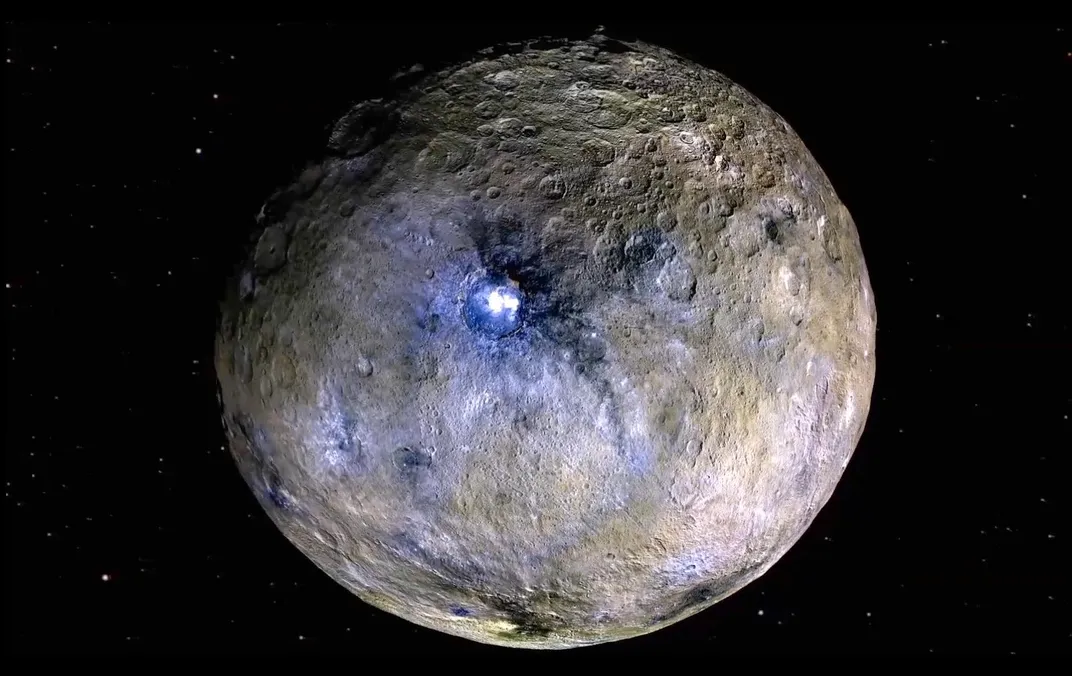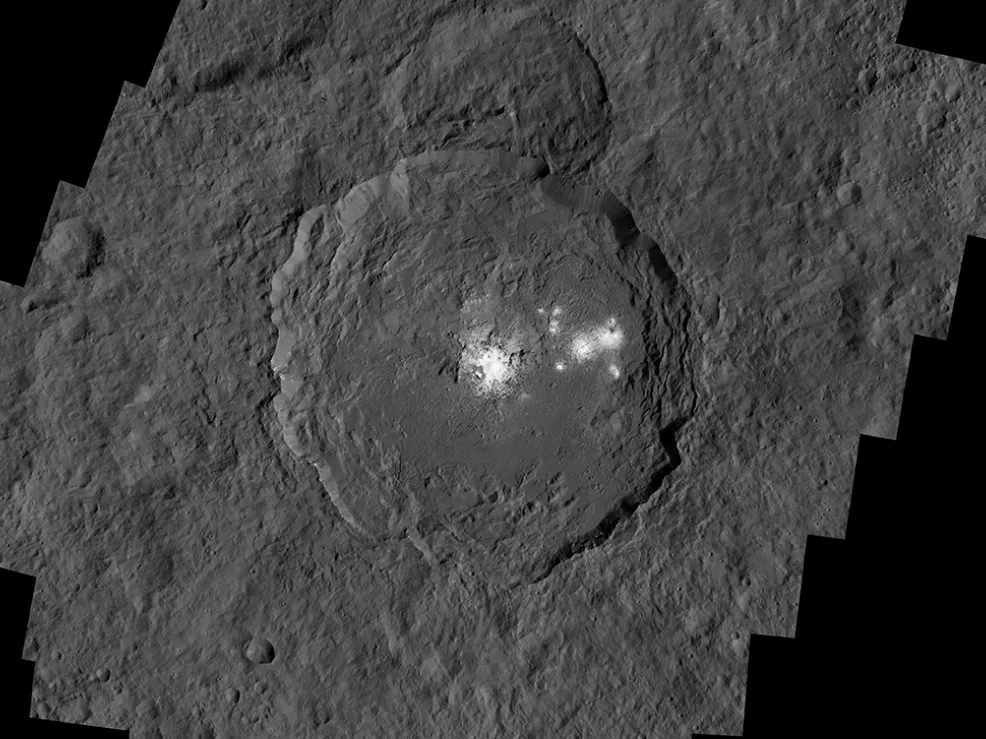NASA Mission Shows Dwarf Planet Ceres Is Geologically Active
Seven studies of data from the Dawn spacecraft’s final orbit makes the case for liquid under the dwarf planet’s surface
/https://tf-cmsv2-smithsonianmag-media.s3.amazonaws.com/filer/37/44/3744ca43-038f-4009-8b3c-fdce679f3d4d/2020_aug12_ceres.png)
The largest object in the asteroid belt, a dwarf planet named Ceres, might contain reservoirs of briny liquid, Michael Greshko reports for National Geographic.
Seven studies published in three Nature journals detail how NASA’s Dawn spacecraft observed Ceres during its last lap around the dwarf planet in 2017 and 2018. The research teams used the photographs and velocity data measured by the spacecraft as evidence that Ceres was recently geologically active—and might still be today. But other experts point out that ocean-driven geological activity is not the only explanation for what Dawn observed, Scott Hershberger reports for Scientific American.
“We’ve provided strong evidence that Ceres is geologically active in the present, [or] at least in the very recent past,” Dawn’s lead investigator Carol Raymond, who manages the NASA Jet Propulsion Laboratory’s Small Bodies Program, tells National Geographic. “And there’s some tantalizing evidence that it could be ongoing.”
Ceres is a relatively small object in the solar system, as the smallest and the closest dwarf planet to Earth, Nola Taylor Redd wrote for Space in 2018. The asteroid belt object is not quite spherical, as it bulges around its equator, and it’s less than a third of Earth’s moon's width, per National Geographic. Ceres is mostly dark gray, but it’s flecked with lighter spots the color of dirty snow that are key to understanding its geological activity.

Much of the new research focuses on Occator crater, Meghan Bartels reports for Space. One paper identifies the different kinds of light-colored patches in Occator. When briny liquid reaches the surface, the water evaporates and leaves behind the bright, reflective patches seen today.
Some of the patches seem to be pools that followed the impact that made the crater and melted Ceres’ icy material. Other patches appear to have spouted from a deeper reservoir of liquid brine still under Ceres’ surface, which may have stuck around as liquid after the heat of the initial impact. Measurements of Dawn’s velocity as it passed over the Occator crater also suggest that there is lower-density material underneath the surface, which could be liquid.
NASA planetary scientist Lindy Elkins-Tanton, who wasn’t involved with the Ceres studies, tells Scientific American that the data supporting brine reservoirs is “convincing” but that they’re not large enough to be called oceans. In her view, it’s more important that Dawn provides evidence that “the heat for the ongoing geologic ‘life’ of a small body can come from impact,” she tells Scientific American. “It actually doesn't have to be the primordial heat of that body.”
The liquid in Ceres’ reservoirs would be more like mud than water as we know it. It’s full of salts and other fine minerals that help keep it from freezing, the same way that salt prevents ice slicks from forming on roads, according to National Geographic. On Ceres, the reservoirs would need to remain liquid even at 22 degrees Fahrenheit below zero.

But with enough heat from impacts, the dwarf planet may have once been habitable, although it may not have actually been inhabited.
“We’ve got this recent, warm, wet geologic system that has all the ingredients that we think you need for life,” Johns Hopkins University planetary geologist Kirby Runyon, who wasn’t involved with the research, tells National Geographic.
Some of the ice that the team spotted on Ceres’ surface, called hydrohalite, is made of sodium chloride—table salt—crystals with water molecules trapped inside. The researchers calculated that after the ice reaches Ceres’ surface, the water inside should disappear within a century, leaving behind salt crystals that would be undetectable by Dawn’s instruments. Because Dawn detected the presence of hydrohalite, the researchers say that brine from inside of Ceres must still be bubbling up to the surface.
But not everyone is convinced by the new evidence.
“I remain pretty skeptical about a subsurface ocean on Ceres,” geologist Jim Zimbelman of the Center for Earth and Planetary Studies at the Smithsonian National Air and Space Museum, tells Scientific American. “Modeling is great, but I will need to see some unequivocal geophysical evidence that a recent ocean existed, let alone still [is] there today.”
There may be a chance for NASA to gather that evidence. A team led by planetary scientist Julie Castillo-Rogez, who co-authored some of the new research, is proposing a sample-return mission from Ceres, reports National Geographic. The mission would launch in 2031 at the earliest, and would bring one hundred grams of material from the bottom of Occator crater back to Earth.